Living in a passive house, French collector Didier Saulnier and his wife Emmanuelle Amiot-Saulnier have been collecting contemporary art for over two decades. Their mantra is Robert Filliou’s quote: “Art is what makes life more interesting than art”. Many of the artworks in their collection are related to social and ecological causes. Besides collecting, they also collaborate with various international artists, from Olafur Eliasson to Taryn Simon and others, to organize art projects that respond to social or ecological initiatives, such as artists4climate, including the iconic public installation “Ice Watch” of twelve 8,000-year-old ice blocks exhibited during COP 21 in Paris in 2015, conceived by Olafur Eliasson with geologist Minik Rosing. This fall, they will be launching their new initiative: The Art Pledge.
Didier Saulnier shared with LARRY’S LIST about the artwork that made them sell their apartment; the theme of their collection being “archeology of our time”; why it is important for a collector to support social and ecological causes; how the art world can work better to address ecological issues; and three emerging artists working on ecological topics not to miss.
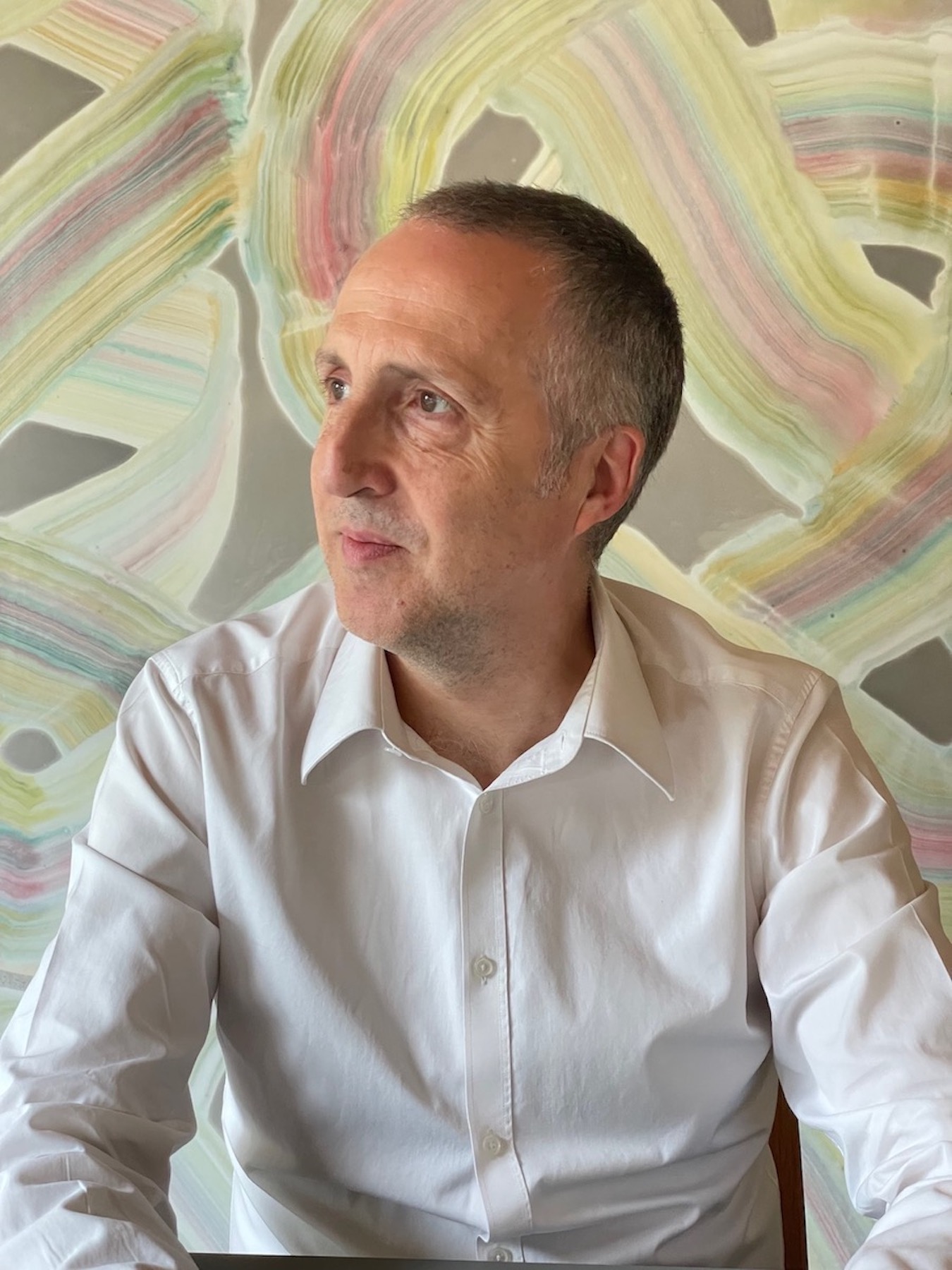
Collecting
How did you start collecting art? What is the main motivation behind your collecting?
The roots are probably deep: as a kid, I collected stamps and part of my initial artistic culture comes from the “imaginary ideal museum” artworks from history represented on them. Funny enough, some of our artists now have their own stamps… Also, the main theme of my philosophy courses during the year of preparation for my business school was art. I was inspired by these questions around the notions of beauty and meaning. Finally, my discovery of Jackson Pollock in his solo show at Tate London in 1999 has been an eye opener on the creative potential of art. I began collecting art by purchasing a couple of Lobi ritual statues in fall 2000. What struck me was the simplicity of forms, and the fact that this woman was taller than the man, a sizing proportional to their wisdom maybe? One month later, I bought my first contemporary artwork, a piece by British artist Chris Drury, “Poison Pie”: the effects of a death cap amanita fungus written over and over, circling its central print, resembling a large eye… we still have it at home in the bathroom… So, although not consciously formulated, social and environmental concerns were already there.
When did you fall in love with a piece of art? What was it?
Every acquisition involves “falling in love” with it, in a way the artwork becomes essential to you, to the point you’re ready to do crazy things to have the privilege to live with it. I don’t like the idea of “possession”: who possesses what? These artworks will survive us. Probably the best example in our collection is our acquisition of “Opale” by Bernard Frize. Our first encounter was during Art Basel 2003, at Galerie Nächst St. Stephan — Rosemarie Schwarzwälder’s booth. We left the fair considering it as the best piece we saw, but we had just gotten married the month before and had other short-term priorities. Then, there came FIAC in October of the same year. “Opale” was central in the gallery’s booth. Emmanuelle told me “How can we make it? We don’t have the space nor the money”. I answered: “Let’s sell our apartment”. At that time, we were living in a tiny 2-room apartment, with indeed no wall for such a piece. “Opale” joined our new home, a loft close to Canal Saint-Martin, on the day we settled down there, some months later.
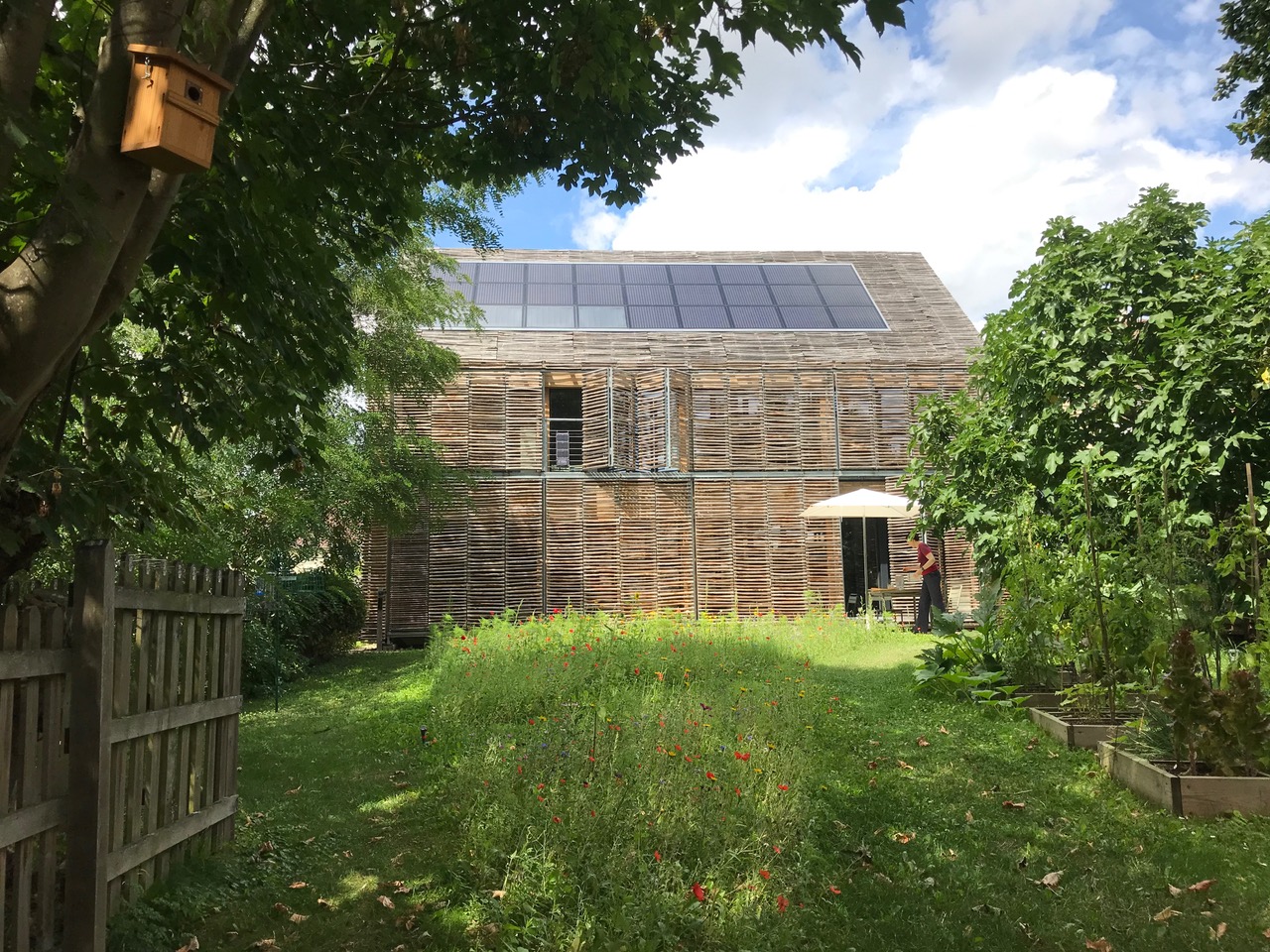
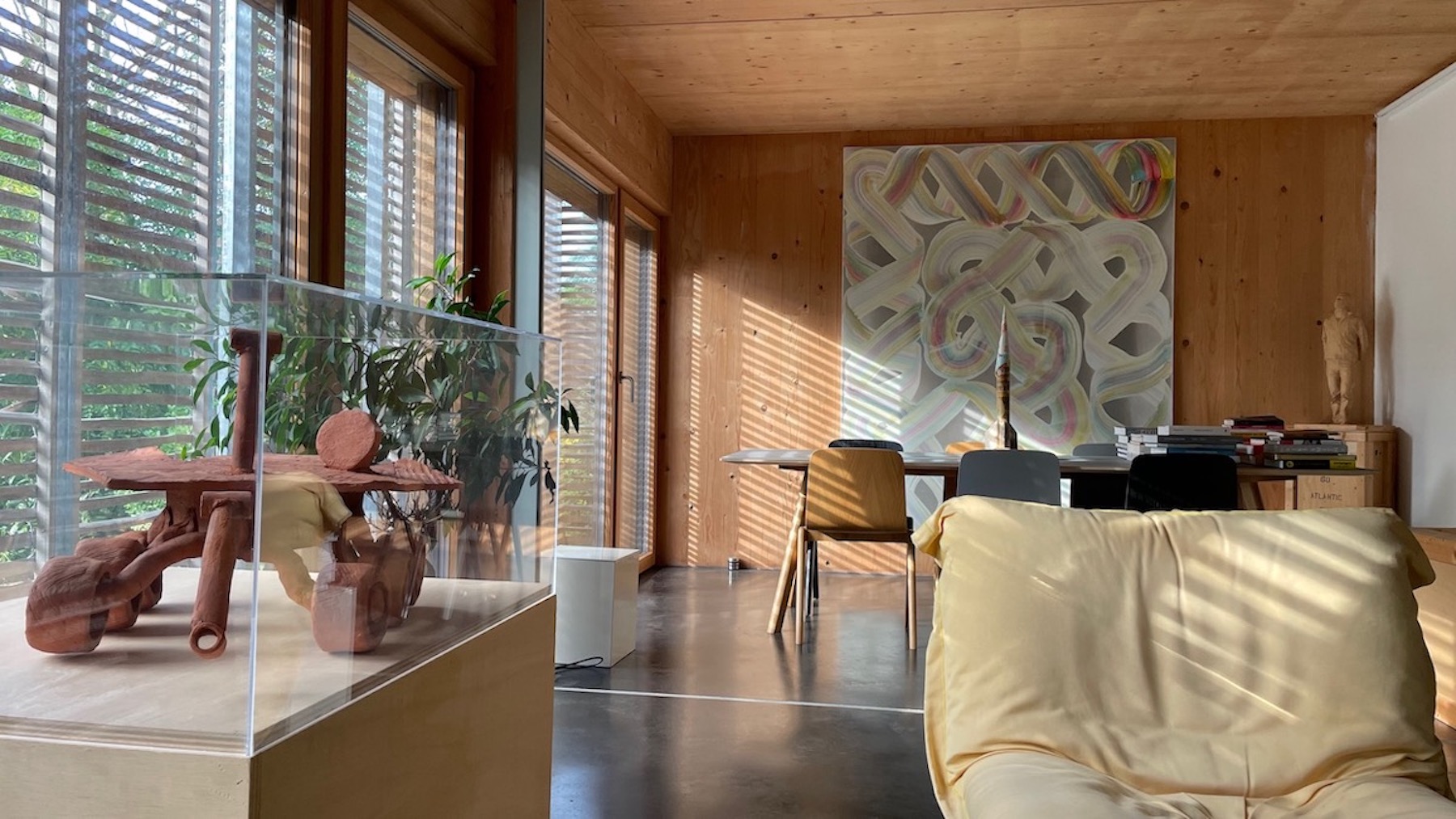
What is your focus regarding the artists in your collection? Are you more interested in emerging or renowned artists? European or international artists?
Shortly after I had met Emmanuelle in a gallery close to the Fontainebleau forest, we bought a painting from Helmut Middendorf. We then met him and his wife, Eleni Koroneou, a gallerist, during the vernissage, and were finally invited to their home in Berlin, which made me discover the German scene from the “inside”. Our first dinner there was at Paris Bar, with Helmut and Axel Hütte, and in the following years, we acquired artworks by Markus Lupertz, Jonathan Meese, Katharina Grosse. Helmut’s story gave me another perspective on the challenges of an artist’s career, often under the spotlight at the beginning, as he was with the “Neue Wilde” group in the 80’s, then having to “cross the desert” at the mid-point, before being eventually recognized by history. This showed me the huge potential of these “mid-career” artists for collectors who take time to look at them genuinely. Noticing what these artists have brought to art, which institutions showed them and with whom, how their art has matured over the decades, and why they could come back under brighter spotlights, when curators and galleries will remember their contribution to their time. This doesn’t prevent me from supporting younger artists too: I’m proud to have played a role in the selection of Cyprien Gaillard for the Marcel Duchamp Prize in 2010, that he finally won, at 30 years old. We bought one of his “Indians” (as the gigantic “Neon Indian” he installed on Alexanderplatz, Berlin, in 2011), but “home-sized”: his “Indian” (“Chief Wahoo” from Cleveland Indians Baseball team as a metaphor of the way Native Americans are still sometimes treated in US iconography) is printed on a polaroid (which will vanish in time) of a castle close to Paris, whose gardens have been designed by the French 18th century painter and landscapist Hubert Robert, the painter of semi-fictitious ruins, who is a major inspiration to Cyprien as to me.
What is the theme that unites all the works you have acquired?
Cyprien Gaillard’s work has opened the field to what perhaps unites our collection: “archeology of our time”. Not only because my first passion as a kid was archeology, but also because I see contemporary artists as “extra lucid”, able to capture the essence of our so-called VUCA times (Volatile, Uncertain, Complex, Ambiguous), as the US Army has coined it.
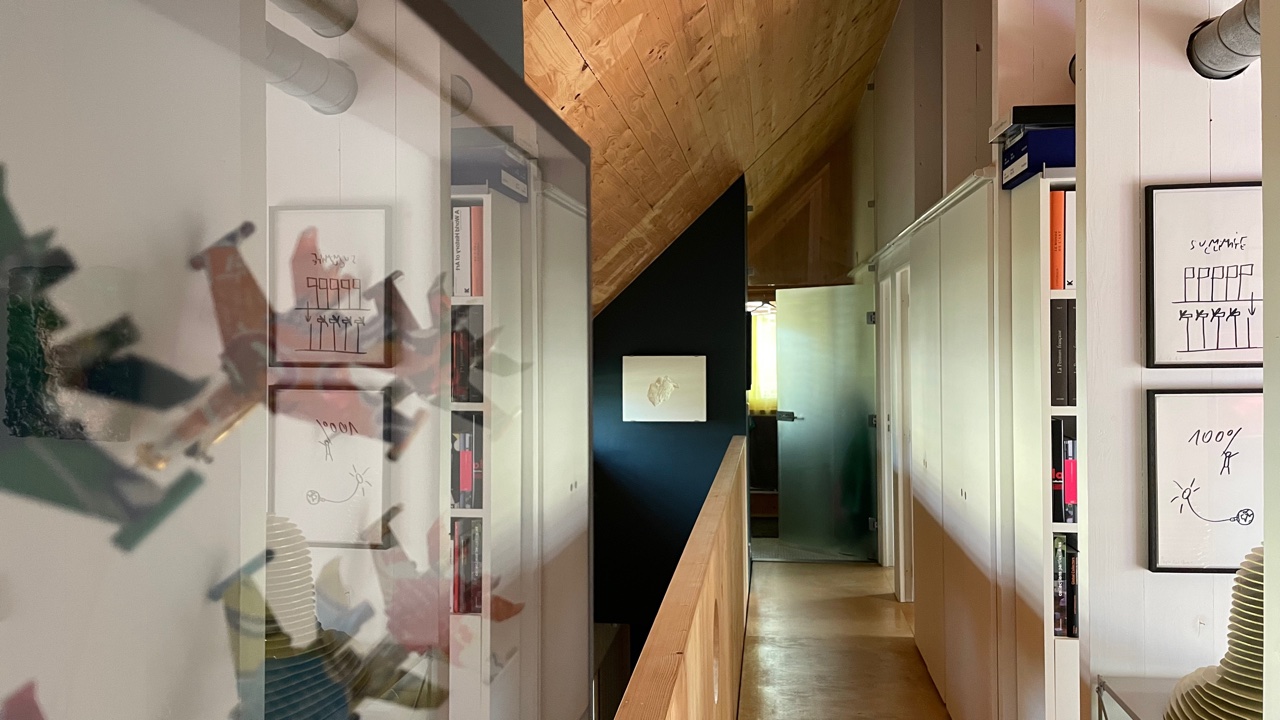
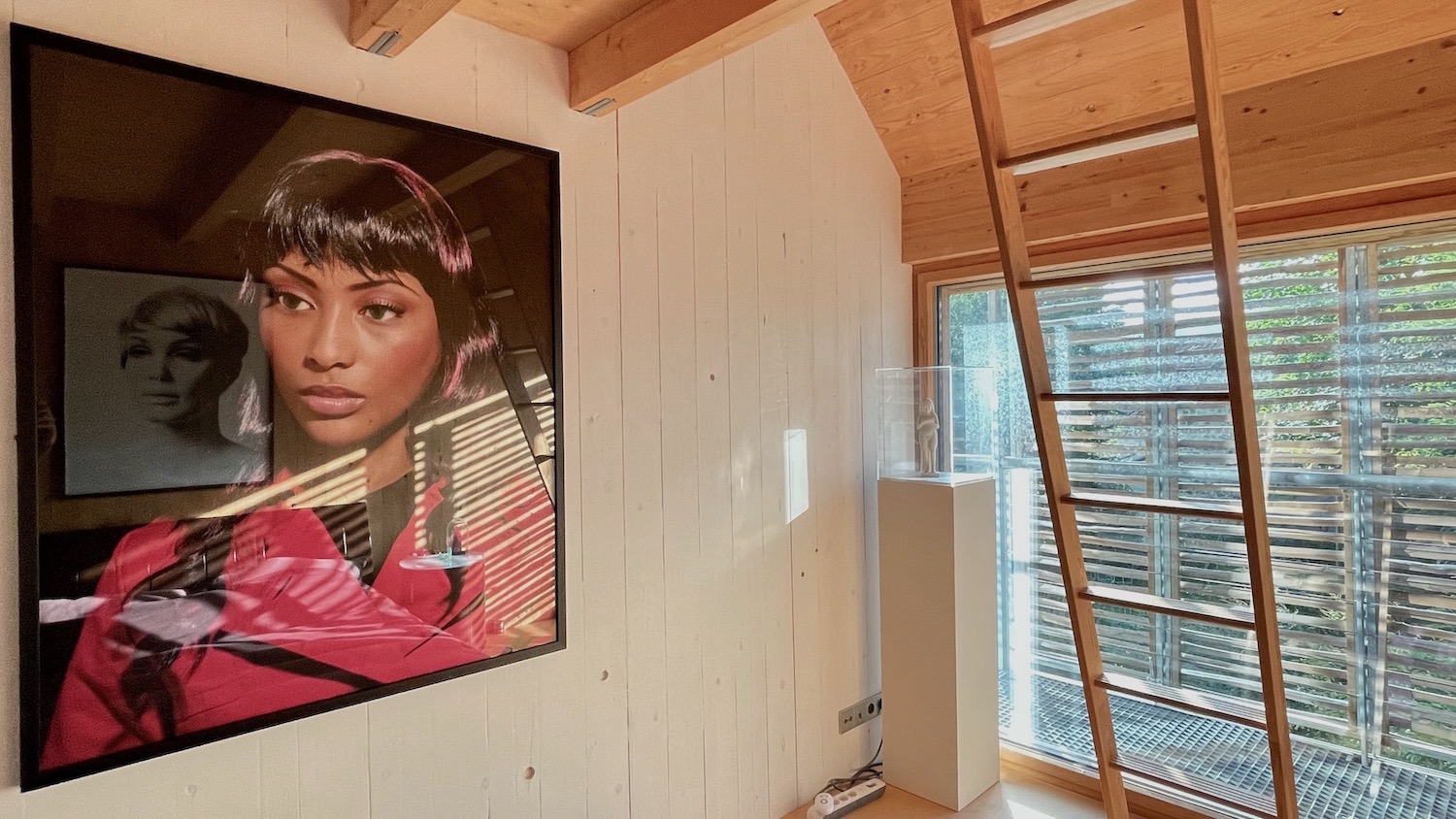
Why do you think it is important for a collector to support social and ecological causes?
Former French President Jacques Chirac said in 2002 to the Earth Summit in Johannesburg, “Our house is on fire and we are looking away”. Almost 20 years later, we see everyday consequences of climate change around the world: giant fires from California to Amazonia, Siberia and Australia; sudden floods from Louisiana to Germany and Japan. The Amazonian forest is not a carbon sink anymore, and in 2020 has emitted as much CO2 as Japan, the 5th CO2 country emitter in the world. In regards to biodiversity, we are facing the 6th mass extinction, and the previous one was 65 million years ago! COVID 19 is considered as having roots in what we call zoonoses, infectious diseases caused by pathogens that have jumped from animals to humans. Only 4% of the total biomass is still wildlife. The pressure we put on the remaining ecosystems will only backfire on us. Populism is threatening women’s and LGBTQ rights, including here in the EU… How can we try to understand our world through the eyes of contemporary artists and stay passive while we are living in maybe the most defining time of humankind, this so-called Anthropocene? In my view, contemporary art should contribute to “eye-opening” and, even more so, to action. We need symbols to accelerate massive change. This is vital to all of us. The UN and 99% of the scientists consider the current decade as crucial for action: this is embodied in the UN 17 Sustainable Development Goals.
What were the first and the latest artworks you purchased?
As I mentioned earlier, the first was this Chris Drury “Poison Pie” in 2000. The last one is a watercolor by Marcel Dzama at David Zwirner Paris, called “Grandfather and kittens” (2020) from the series “Blue Moon of Morocco”. This is our second piece by Marcel Dzama, adding to a collage of his. He made these new series during confinement, 2 years after he travelled to Morocco with his son. This colorful and luminous melancholia, the intimate connection of his son with this old man from another culture and the alley cats around; the fact that he made the work from his memories and probably pictures as we were all stuck because of the pandemic; and finally my passion for Africa and Maghreb, where my parents were born, a theme that Emmanuelle, my wife, also covered as a curator in the 2019 exhibition “Orient of the painters” at Marmottan-Monet Museum — all these elements made this acquisition “a must”.
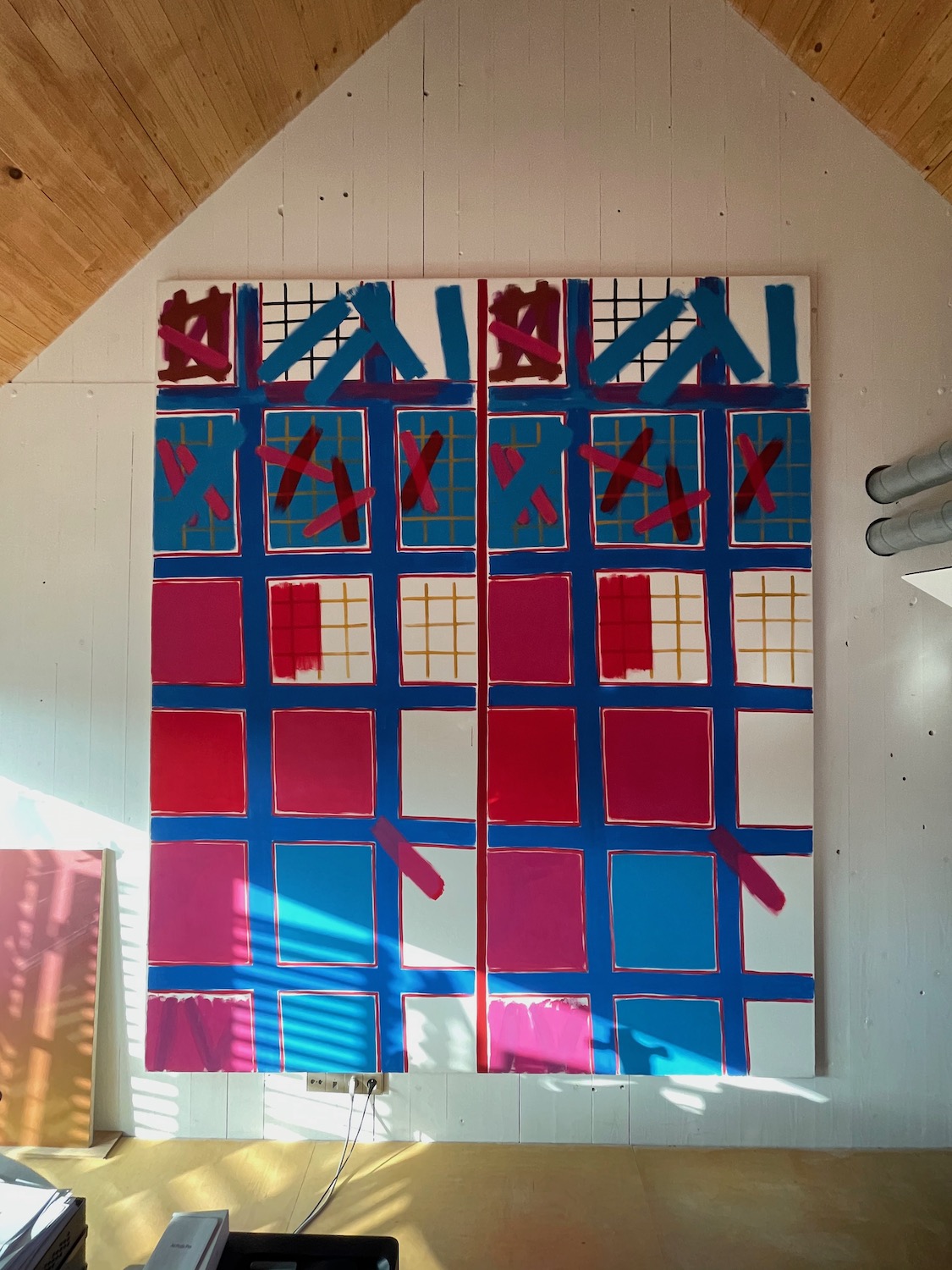
How many artworks do you own? Where do you display your collection?
I never really counted them. To me, what counts is to have them all around us, at home. The same way we sold our 2-room apartment to buy the Bernard Frize in 2003, we started positioning every artwork in our current house even prior to our acquisition of it in 2013. For example, we removed a mezzanine to hang a large painting by Bernard Piffaretti. As it was impossible to fit the painting through the door, it came rolled-up and Bernard, after unframing it from our former apartment, reframed it in the tiny room, prior to installing the furniture. No need to say the work is here to stay for a while… and it echoes the bookcase in front of it so well: inspiration and knowledge, face to face.
Have you ever presented/ Would you wish to present your art collection publicly?
We’ve lent artworks in France and abroad (Germany, Korea) on several occasions these last 10 years. But certainly, the loan we are the proudest of is that of “Opale” for Bernard Frize’s solo show at Centre Pompidou in 2019. Given the intimate story of this painting for us, it was kind of a recognition to have it hung there, right next to the one in the Tate Collection. Showing the whole collection is not in our short-term plan so far because it would be emptying our home of its soul… and neither do we have the plan to organize visits, albeit exceptionally through ADIAF.

What considerations guide you to make a purchase? How important are the ecological factors in your decision?
It is a long maturing process: our 20 years of collecting showed us that there should never be a rush, unless we had been waiting for the right piece from an artist that we were looking for a while, and it suddenly happens… So our first consideration is the artist’s “grail”, what they are pursuing in their oeuvre. Of course, as mentioned before, this “archeology of our time” is often paired with social and ecological factors, as if we were looking at our time from our future… or our past. This appears in many of our artworks: from Adel Abdessemed’s “Spirit”, with his interpretation of a highly technological human creation (Spirit of Mars, one the first robots sent on Mars) treated as an archeological artefact (hand-made faceted terracotta), to Camille Henrot’s “Haut Relief”, the plaster mold of a plastic bag grabbed around the Giza pyramids, resembling an impressive fossil from the most common and ecologically destructive human production of our time. We also have been struck by Taryn Simon’s “An American Index of the Hidden and Unfamiliar” series from which we have ‘Dynamo III, Studying Magnetic Fields and Impending Pole Reversal’: a very meaningful representation of how humans believe they can control everything, including the Earth’s magnetic poles which are currently showing movement due to human impacts on the Earth, with potential dramatic consequences on climate.
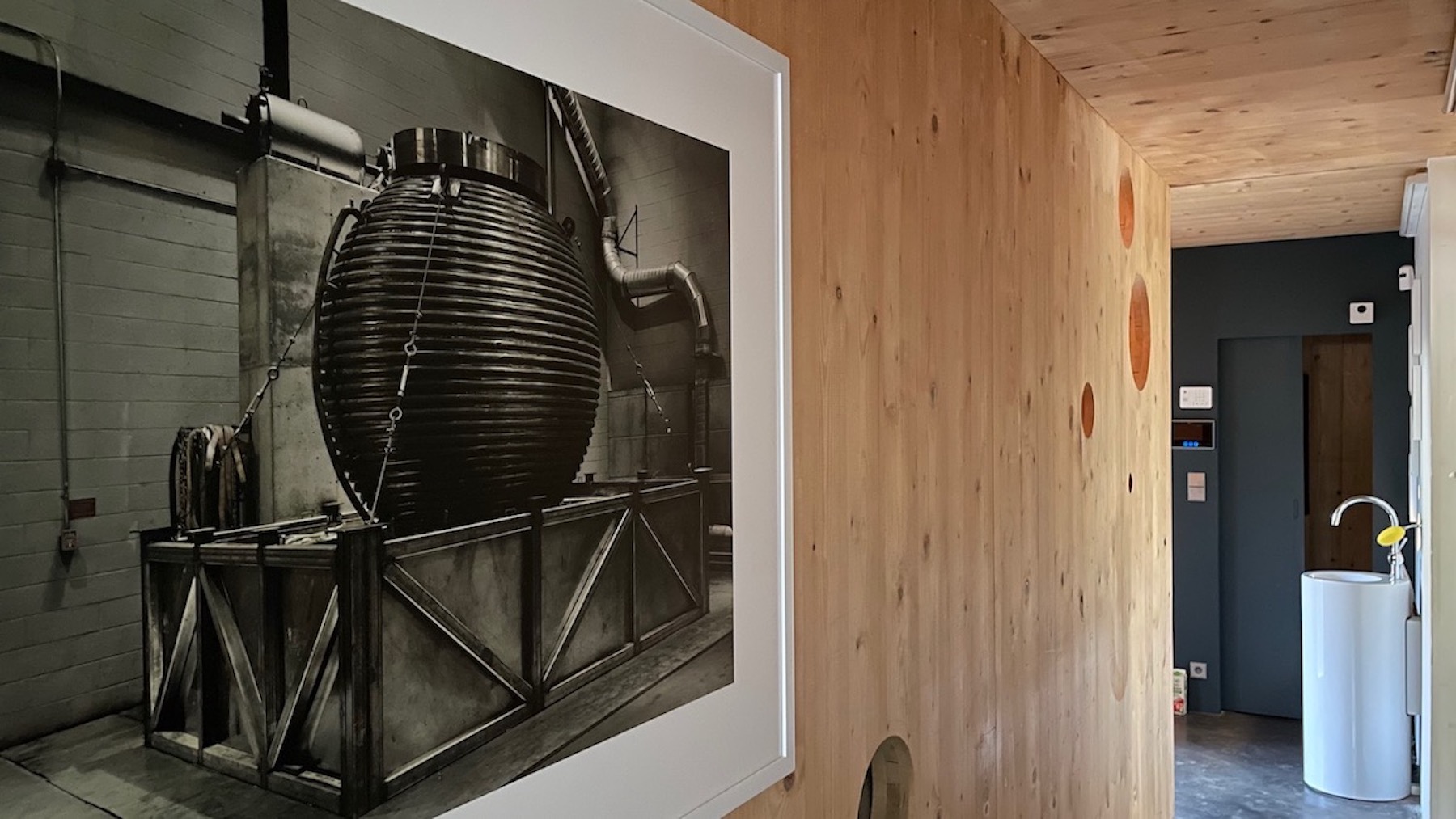
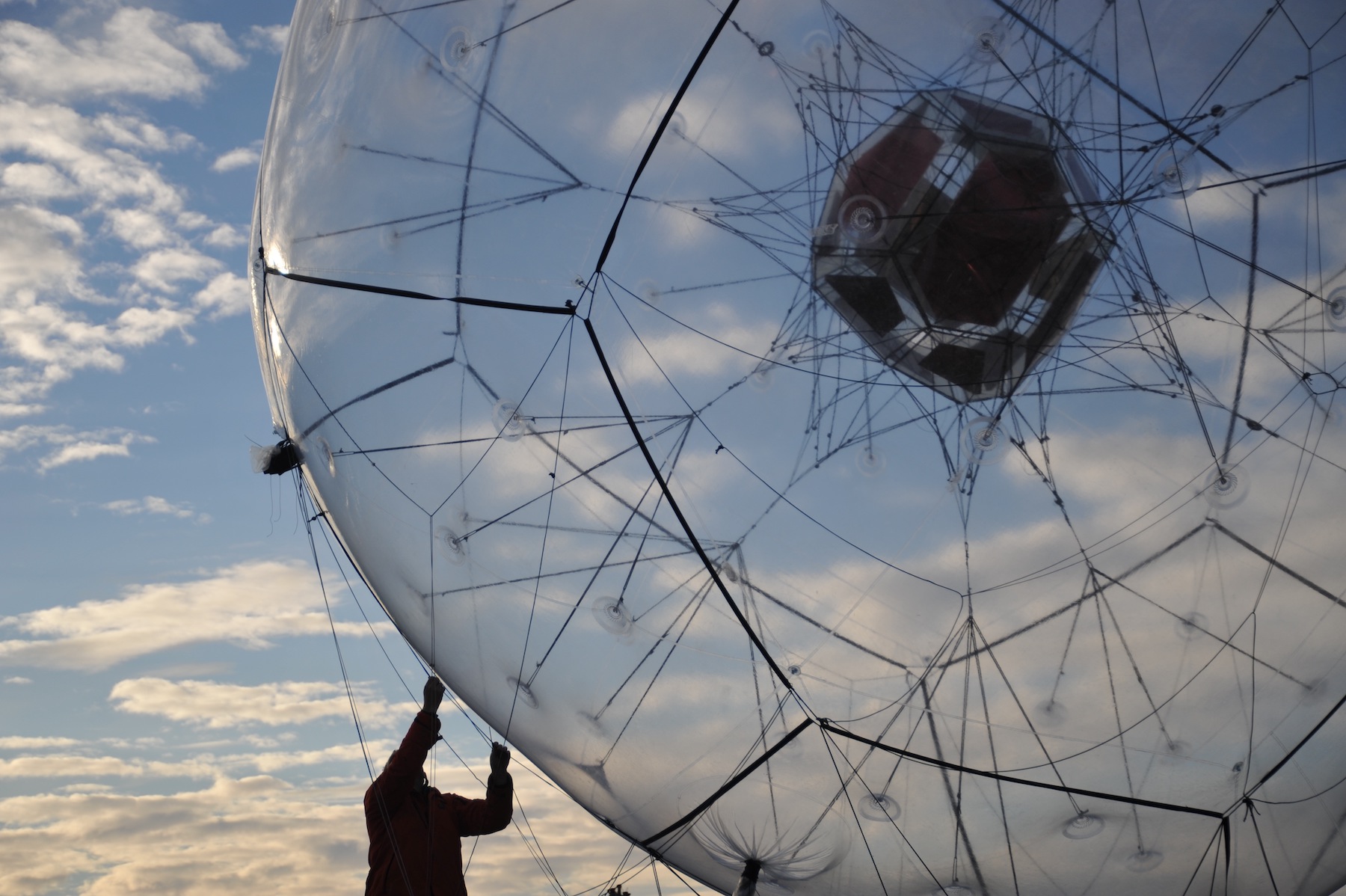
How important is it for you to meet the artists who created the artwork? How is your experience so far collaborating with artists for various projects?
Meeting the artist before acquiring their artwork is not a necessity for us, but we always appreciate doing so after the acquisition. Then, of course, it is a great opportunity to see where and why we connect to something intimate, deep within us. In my professional activity, it’s always been such a joy to see that most of the international artists we invited to work with us answered positively, sometimes enthusiastically. I will never forget Tomas Saraceno landing at Basel-Mulhouse airport in 2011 to make a flight performance in the sky of the first HQE (High Environmental Quality) railway station in Europe inaugurated the same day. This was his first public performance in France. The weather was terrible the day before. Tomas told me: “Didier, not only do you take the risk on a type of performance most museums don’t want to themselves, but you choose December to do it…” In the end, it happened in a beautiful cloudy blue sky, and Tomas awarded me a “Super Didier”. Maybe “Super Lucky” would have been more appropriate! So many fantastic professional encounters and projects with artists like Olafur Eliasson, Taryn Simon, Ernesto Neto, Pascale-Marthine Tayou, Daniel Buren… are just unforgettable. Some projects have happened, some haven’t (yet), this is the factory of dreams in action.
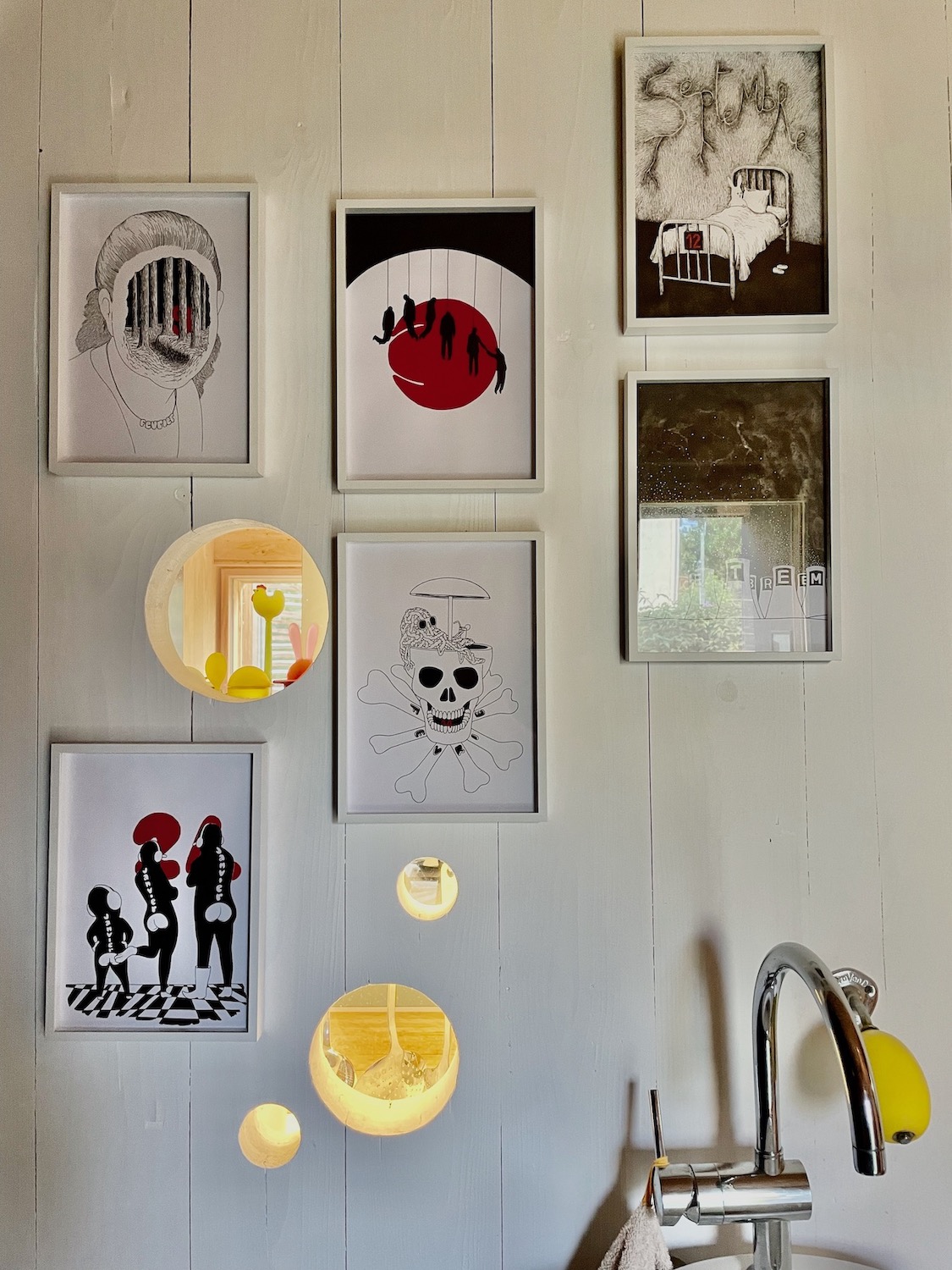
The Art World
What’s your art-world pet peeve?
No “pet peeve” per say, but I find it sad when I see some people considering art as just a social networking opportunity, or an asset diversification. My mantra is Robert Filliou’s quote: “Art is what makes life more interesting than art”. I so deeply believe in it that I have spent the last 2 years trying to embody this idea, which we are about to launch.
How do you think the art world can work better to address ecological concerns? How can art collectors contribute besides collecting?
For me, it should go beyond “offsetting carbon footprint”, even if this is an essential first step. It’s great to see initiatives flourishing like Galleries Commit in NYC or Gallery Climate Coalition (GCC) in the UK. It’s very important that the art world becomes aware of the situation and willing to change its practices, especially on shipping artworks: do you know that Sea freight between NYC and Paris is emitting 30 times less CO2 than Air freight? Is receiving your artwork in 2 weeks rather than 6 weeks that important? And of course, at cheaper economic cost too. But our plan is to engage galleries, artists, and collectors a step further: buy meaningful art supporting defining causes of our time — 365 days a year. Collectors are among the most powerful people in this world, they have the power to accelerate change, they know as businesspeople that the economic world has already adopted the UN 17 Sustainable Development Goals (SDGs). And for the first time, in the annual Art Basel Report this spring, “Alignment with SDGs” has entered the top 10 collectors’ motivations for purchasing art (64%).
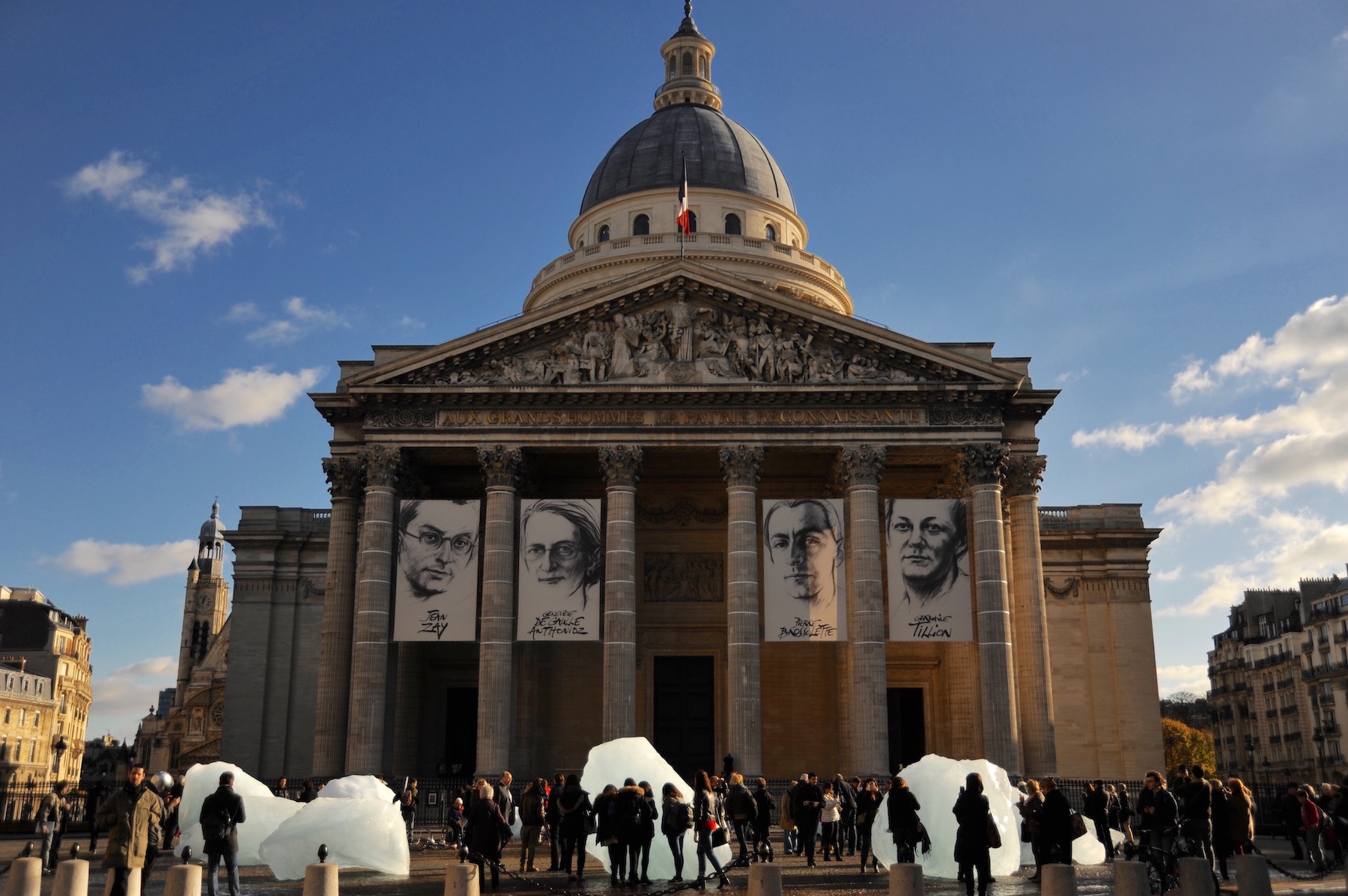
You have worked with COP 21 to organize art projects. How were the experiences? What were the most memorable moments?
We wanted through artists4climate initiative to make an impact, beyond just having some committed artists in a museum or public space. The idea was to invite international artists to work in public spaces in a way of an “eye-opener” on the emergency. So attracting mass media was essential too. And as a move to action: we organised a Charity with the same artists, at Christie’s Paris, to support concrete projects on the field in Asia, Africa, and the Americas, chosen with the United Nations. Almost all international artists I invited said yes! But, besides the economic or technical considerations of some ambitious projects (like the so meaningful “Illuminated Wind Turbine” from Taryn Simon, a symbol of the 3d industrial revolution dialoguing with one of the 1st: the Eiffel Tower), amazing projects with Barbara Kruger, Daniel Buren or Alfredo Jaar didn’t see the light. Projects associated with the Climate March (with Ernesto Neto, Michelangelo Pistoletto, Dan Perjovschi) or planned in the Charles-de-Gaulle airport (with Yin Xiuzhen and Pavel Pepperstein) were cancelled, due to the terrible terrorist attacks on November 13th 2015, 3 weeks before COP21. We saved a few, the most iconic being “Ice Watch” from Olafur Eliasson with geologist Minik Rosing: initially accepted on Republic Square, we finally made it on Pantheon Square: this symbol, between the place of the great figures of France and the Sorbonne University, was strong too. Media from all over the world came around to see what these twelve 8,000-year-old blocks of ice transported from Nuuk in Iceland (were fished in the ocean and the total carbon footprint of bringing them to COP21 didn’t exceed the round trip flight between Nuuk and Paris of 30 passengers only) to Paris for COP21 had to show and tell us (air bubbles captured in the ice from these ancient times, with no industrial pollution, were vanishing in the air of Paris…). So proud to have done it finally, just like Tomas Saraceno’s first Aerocene installation suspended at Grand Palais… among a few others.
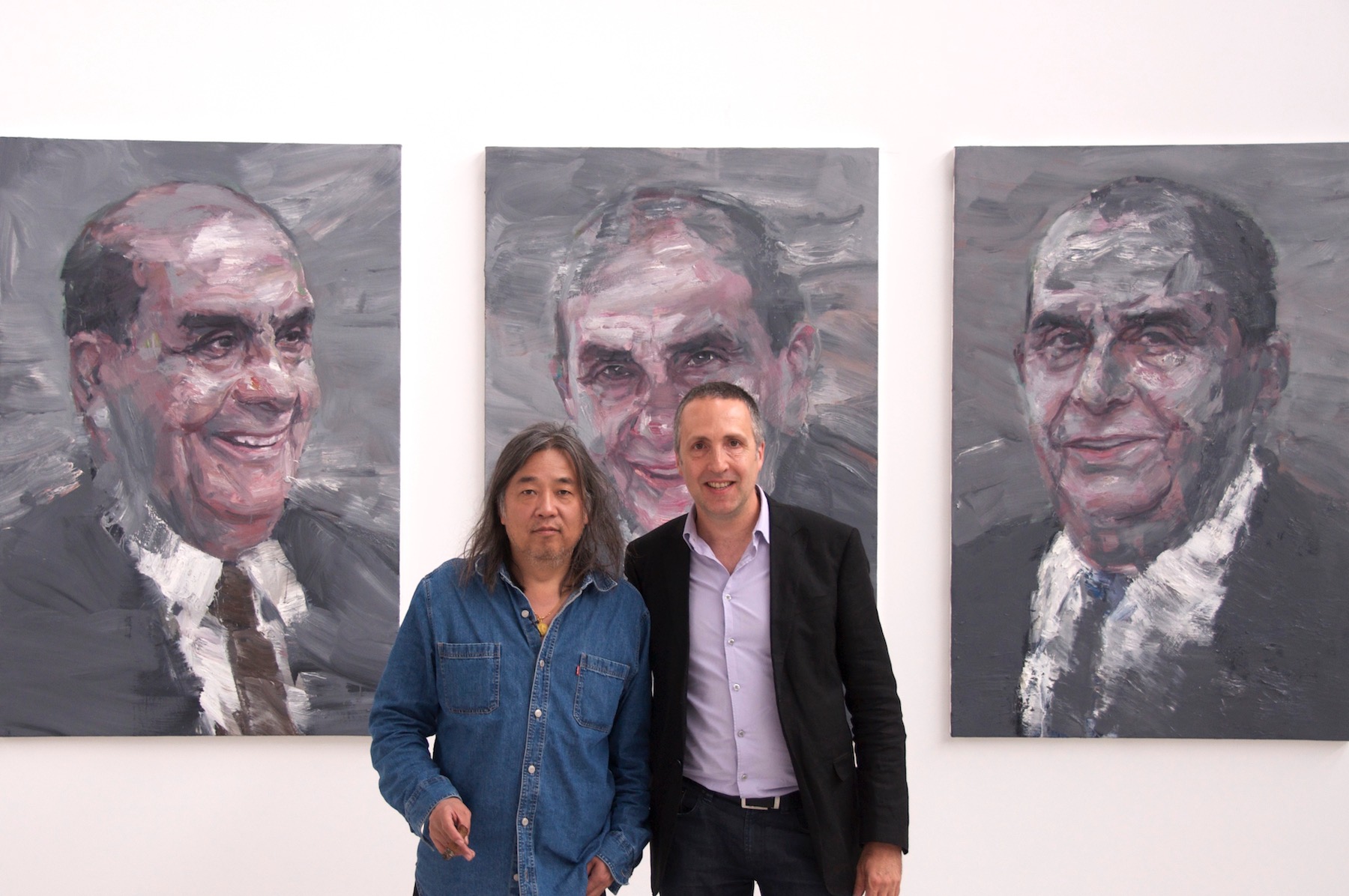
Can you name three emerging artists working on ecological topics who should be on our radar?
Julian Charrière (born 1987), Marguerite Humeau (born 1986), and Bianca Bondi (born 1986)
What art and ecological projects are you especially excited about in the next 12 months?
The launch of our new initiative this fall: The Art Pledge.
It will be the first art x cause global platform, and we are so excited about the innovations to come in the platform’s user experience, as well as about the early interest of international galleries and artists around the world. Can’t wait!
Related: The Art Pledge, artists4climate
A selection of artists Didier collects:
Adel Abdessemed
Bernard Frize
Camille Henrot
Kiki Smith
Taryn Simon
Wang Du
By Ricko Leung





